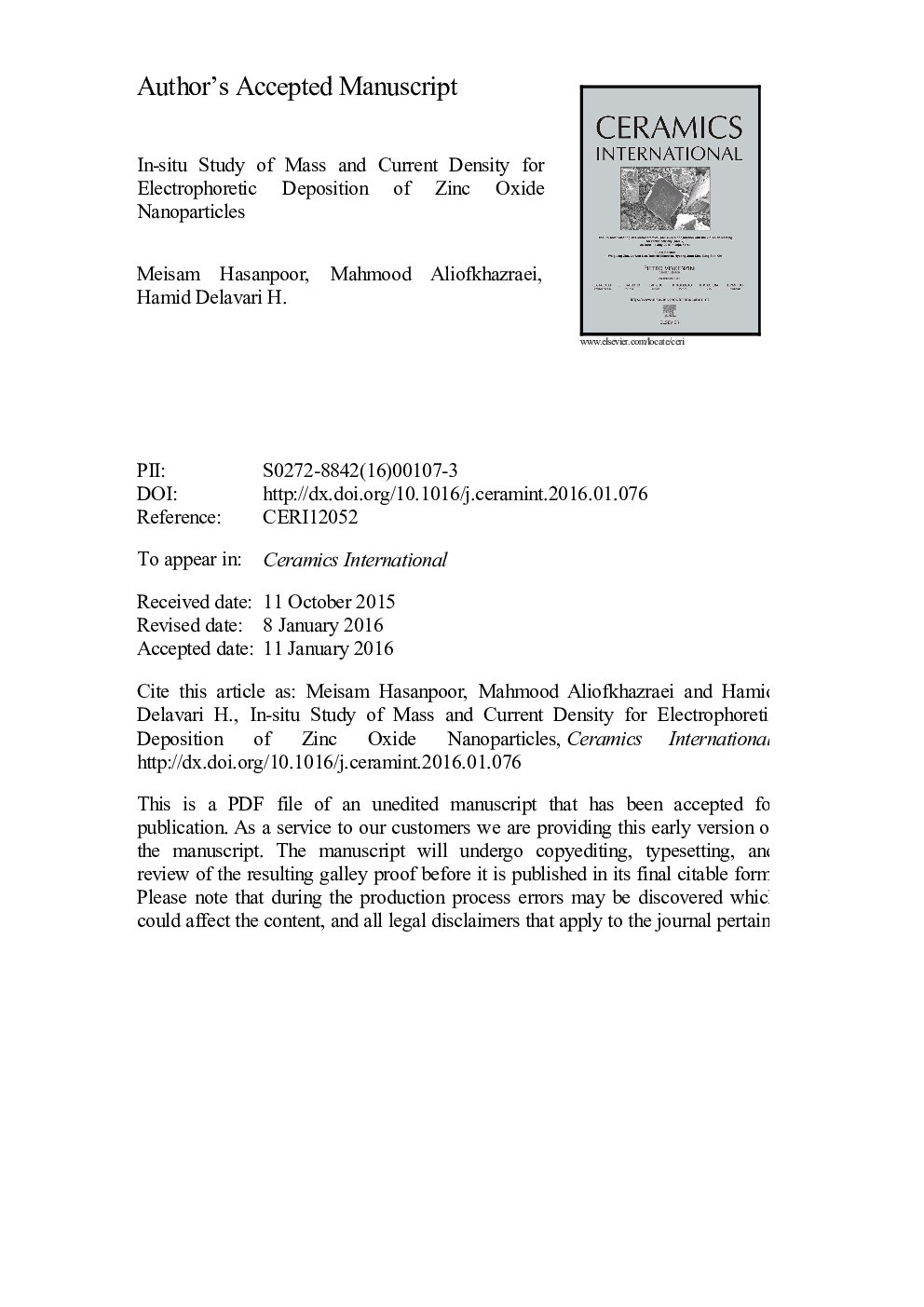| Article ID | Journal | Published Year | Pages | File Type |
|---|---|---|---|---|
| 10624268 | Ceramics International | 2016 | 35 Pages |
Abstract
In this study, zinc oxide nanoparticles were synthesized by the hydrothermal microwave-assisted method, followed by its deposition using electrophoretic deposition (EPD) method. An investigation of the characteristics of the synthesized nanoparticles was carried out using X-Ray Diffraction (XRD) and Fourier Transform Infrared Spectroscopy (FTIR). The morphology and size distribution of the nanoparticles were examined by the images obtained from Transmission Electron Microscope (TEM). The in-situ variations of mass and current density were investigated during the EPD. The effect of different parameters such as the solvent type at various voltages (20 and 40Â V) was investigated on EPD kinetics. By increasing the voltage from 20 to 40Â V in the methanol, the mass of the deposited film was increased up to about 38%. Similarly, in the ethanol, an increase equal to 39% was observed. The morphology and porosity of deposited nanoparticles were studied by analyzing the images of the Scanning Electron Microscope (SEM). It was observed that the porosity of the film in the ethanol was more than the methanol, at similar potentials. The increase in porosity at the voltage of 20 V was almost 3.1% and at 40Â V, it was approximately 4.4% with respect to methanol. Initial current densities in methanol at 20 and 40Â V were about 18 and 29% more than ethanol, respectively.
Keywords
Related Topics
Physical Sciences and Engineering
Materials Science
Ceramics and Composites
Authors
Meisam Hasanpoor, Mahmood Aliofkhazraei, Hamid Delavari H.,
